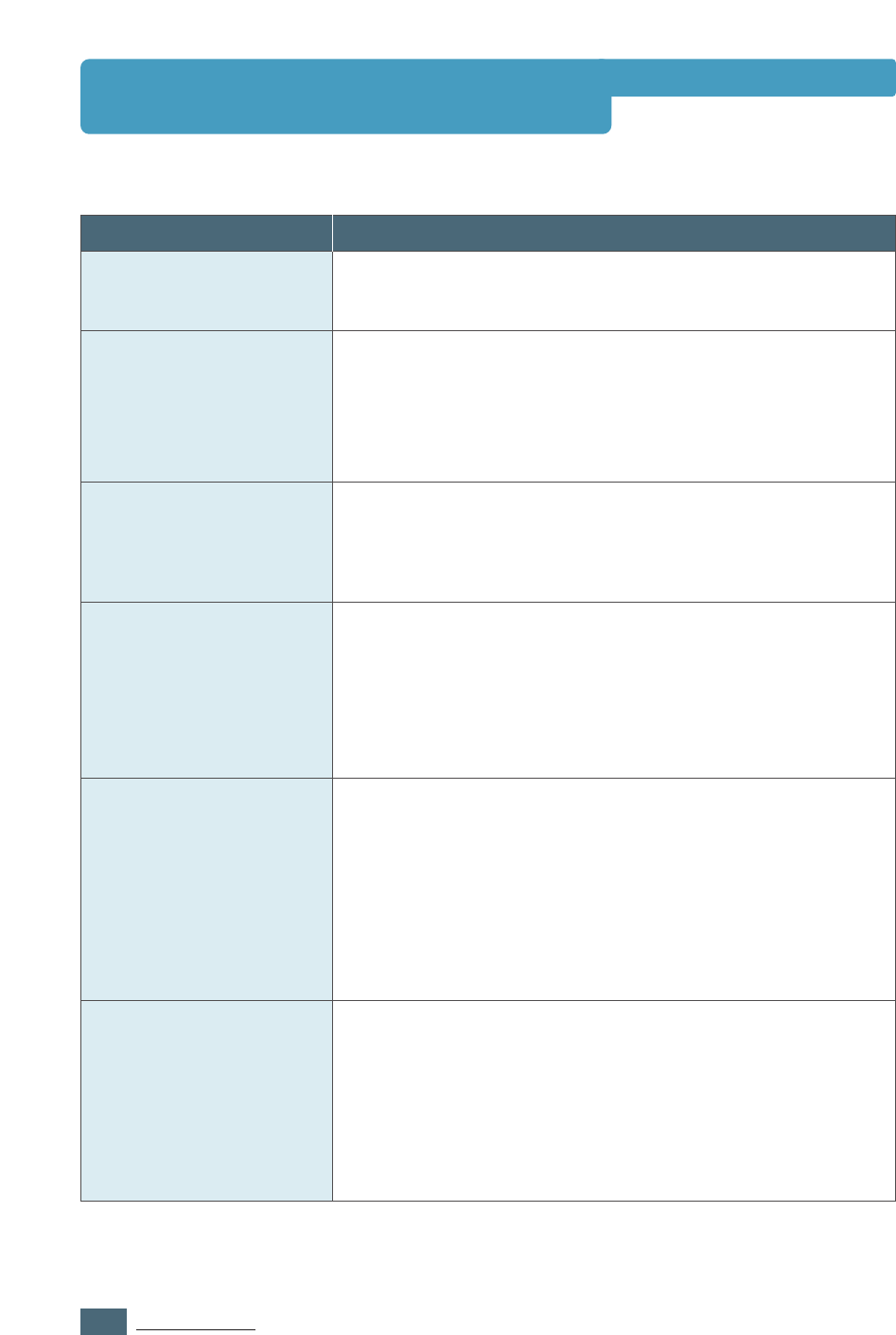
7.22
PROBLEM SOLVING
Common Linux Problems
Problem
I can’t change settings in
the configuration tool.
Possible Cause and Solution
You need to have administrator privileges to be able to affect
global settings.
I am using the KDE
desktop but the
configuration tool and
SLPR won’t start.
Maybe you do not have the GTK libraries installed. These
usually come with most Linux distributions, but you may have
to install them manually. Refer to your distribution’s
installation manual for more details about installing additional
packages.
I just installed this
package but can’t find
entries in the KDE/Gnome
menus.
Some versions of the KDE or GNOME desktop environments
may require that you restart your session for the changes to
take effect.
I get a “Some options are
not selected” error
message while editing the
printer settings.
Some printers have conflicting settings, meaning that some
settings for two options can’t be selected at the same time.
When you change a setting and the Printer Package detects
such a conflict, the conflicting option is changed to a “No
Choice” value, and you have to choose an option that does not
conflict before being able to submit the changes.
I can’t make a printer the
system default.
In some conditions, it may not be possible to change the
default queue. This happens with some variants of LPD or
LPRng. LPD systems identify the default queue as the one
named “lp”. Thus if there is already a queue by this name, and
if it doesn’t have any alias, then you won’t be able to change
the default. To work around this, you can either delete the
queue, or rename it by manually editing the /etc/printcap
file.
The N-up setting does not
work correctly for some
of my documents.
The N-up feature is achieved through post-processing of the
PostScript data that is being sent to the printing system.
However, such post-processing can only be adequately
achieved if the PostScript data conforms to the Adobe
Document Structing Conventions. Problems may arise when
using N-up and other features relying on post-processing if the
document being printed isn’t compliant.


















